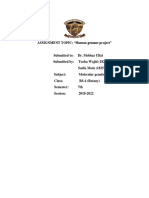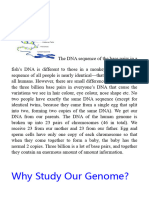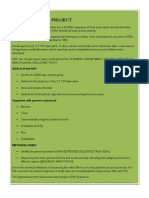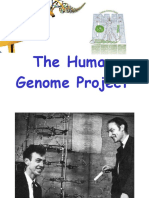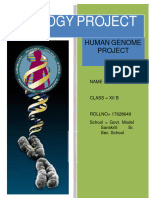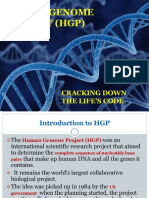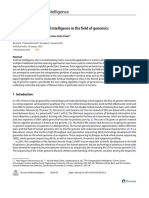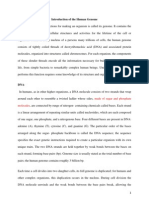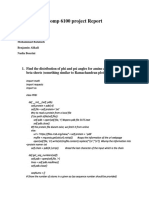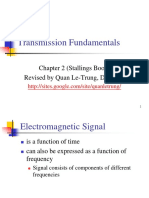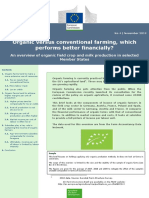0% found this document useful (0 votes)
21 views3 pagesExplanation of Data
The Human Genome Project (HGP) was a landmark initiative aimed at mapping and sequencing the human genome, launched in 1990 and completed in 2003. It sought to identify every human gene and create genetic and physical maps to aid in understanding health and disease, while also sequencing other model organisms to highlight evolutionary gene conservation. The project resulted in a comprehensive dataset of SNPs across human chromosomes, contributing to the field of genomics and bioinformatics.
Uploaded by
Anas JamshedCopyright
© © All Rights Reserved
We take content rights seriously. If you suspect this is your content, claim it here.
Available Formats
Download as DOCX, PDF, TXT or read online on Scribd
0% found this document useful (0 votes)
21 views3 pagesExplanation of Data
The Human Genome Project (HGP) was a landmark initiative aimed at mapping and sequencing the human genome, launched in 1990 and completed in 2003. It sought to identify every human gene and create genetic and physical maps to aid in understanding health and disease, while also sequencing other model organisms to highlight evolutionary gene conservation. The project resulted in a comprehensive dataset of SNPs across human chromosomes, contributing to the field of genomics and bioinformatics.
Uploaded by
Anas JamshedCopyright
© © All Rights Reserved
We take content rights seriously. If you suspect this is your content, claim it here.
Available Formats
Download as DOCX, PDF, TXT or read online on Scribd
/ 3








